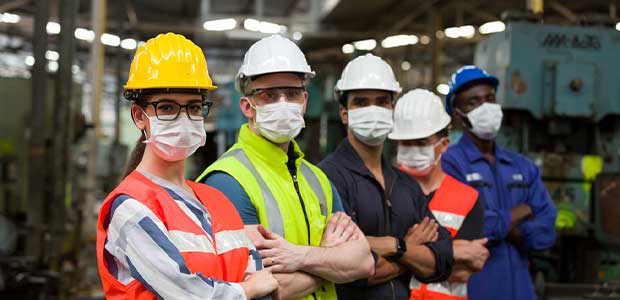Everyone has a right to feel safe and healthy wherever they work. Whether your workers manage a factory floor or input data in a cubicle their health and safety as employees should be a top priority. Sometimes, especially with larger companies, it can be easy to prioritize money and productivity over the well-being of their workers. But if you’re the owner of a company or a manager in charge of employees, it’s essential that you take proper care of them.
The Importance of Health and Safety at Work
Employers have a legal and ethical obligation to prioritize health and safety in the workplace. According to the Occupational Safety and Health Administration (OSHA), employers are required to provide a safe work environment, adequate training, and necessary protective equipment. Prioritizing workplace health and safety involves sensibly managing risks to protect workers and the business.
In addition to meeting legal obligations, prioritizing health and safety can benefit both employees and employers in numerous ways. If you’re concerned about the safety or health standards at your company, you can reach out to a workplace lawyer or an OSHA worker who can help you go over safety regulations or devise new strategies for preventing any issues.
Prioritizing health and safety can also have a positive impact on workplace culture. When employers prioritize health and safety, workers are more likely to feel valued and respected, which can lead to increased job satisfaction and productivity. A positive safety culture in the workplace is vital to maintaining employees’ physical health while on job sites. Companies that prioritize safety are often more efficient and have less employee downtime, which results in higher-quality products and services.
Communicating with employees about the steps taken to ensure their safety and encouraging them to prioritize their own health can create a positive safety culture in the workplace. Building a strong health and safety culture will have a positive impact on workers, the bottom line, and public perception. By dedicating resources to prioritizing health and safety, employers can create a safer and more productive workplace that benefits everyone involved. Cultivating a positive safety culture is becoming a top priority for many businesses because safety matters to employees and the bottom line.
Identifying Problem Areas
Identifying and addressing potential hazards in the workplace is a crucial aspect of prioritizing health and safety. Conducting risk assessments is an effective way to identify potential hazards and prioritize them for control. This involves identifying health, safety, and environmental risk factors in the workplace and listing them for further evaluation. A thorough inspection of the work environment, systems, and equipment is necessary to determine potential hazards and assess the level of risk they pose. Tools such as risk matrices can help safety professionals place risks into categories based on the likelihood and severity of a potential incident.
Implementing safety measures and protocols is another important step in prioritizing health and safety in the workplace. Compliance with regulations and guidelines set by organizations like OSHA is crucial in maintaining a safe work environment. Employers should also adopt infection prevention and control strategies based on a thorough workplace hazard assessment. Creating procedures and checklists and communicating with employees about the steps taken to ensure their safety are effective ways to implement safety measures and protocols. It is also important to hold employees accountable for safety and recognize those who go above and beyond to support a safe workplace.
Providing adequate training and resources is crucial in ensuring that employees have the knowledge and skills to maintain a safe work environment. Offering occupational safety and health training is an effective way to provide employees with the tools they need to identify and address potential hazards in the workplace. Encouraging employees to volunteer for safety and health programs can also help promote a culture of safety in the workplace. Employers must consider physical, mental, and emotional factors that may affect employee health and safety.
Creating a Positive Environment
Creating a culture of safety in the workplace is crucial for prioritizing the health and well-being of employees. Encouraging employee participation and feedback is an effective way to establish this culture. By involving workers in safety and health decisions, management demonstrates that it values their input and is committed to creating a safe work environment. Successful employee engagement in safety programs largely depends on the motivation and support of leadership teams. Conducting regular employee engagement surveys that include workplace health and safety questions can help identify areas for improvement and ensure that employees feel heard and valued.
Recognizing and rewarding safe behavior is another important aspect of creating a culture of safety in the workplace. Positive reinforcement can encourage employees to prioritize safety and make safe choices. Companies that train and encourage leaders to recognize safe behavior and positive outcomes have excellent safety cultures. Offering both rewards and recognition, such as praise and tangible rewards, can help reinforce safe behavior and create a positive work environment. Recognizing and rewarding safe behavior also demonstrates to employees that their safety is a top priority for the company.
No matter what kind of business you run, the health and safety of your employees should be a top priority. Without workers, nothing can get done, and if you don’t take the well-being of your employees seriously they won’t be motivated to work efficiently or may look for work elsewhere. Your workers are people, not cogs in a machine, and need to be treated and respected as such.


